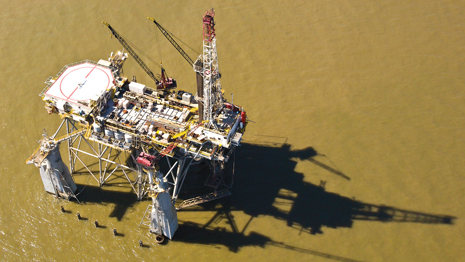Innovative thinkers
Mark A. Childers: Innovating for a living
|
In the early days of the offshore oil and gas industry, creativity flourished, as companies would try anything, just to see what might make things better. These days, not every young engineer is encouraged to think outside of the box. Innovation isn’t as simple as plugging data into a formula, but the process starts with curiosity, the right work environment and a little bit of courage. At least, that’s how Mark Childers sees it.
After more than 45 years in the business, Childers is now a consultant and an expert witness, with a focus on rig operations and design, mooring and subsea equipment. Getting his start with Exxon and EPRCO in the mid-1960s, Childers said he gained the hours of valuable field experience that many of today’s young professionals simply don’t get. Following stints with companies including ODECO Drilling, Diamond Offshore and Oceaneering, Childers landed at Atwood Oceanics in 1999, where he said he worked on one of the most rewarding projects of his career. Resulting in one of his nine U.S. patents, the work Childers and his team performed on the Richmond submersible rig provided a solution to a problem that had faced submersibles for more than five decades. For years the question of how to get a submersible to stay put plagued contractors. After one bad weather episode, the Richmond was blown off location, and the company lost its drilling contract. Childers said that’s when he began to really develop the idea of a more effective system to keep the rig on location. Historically, submersibles stayed on location via ballast weight or “over burden,” but strong environmental conditions can overcome pure weight to keep the submersible on location. For the Richmond, the concept of using a self-contained suction pile system proved to be the trick, to keep the rig on location through winter storms and several hurricanes. Like any operation, though, as soon as one problem is solved, others inevitably arise. As payloads continue to rise, rigs, and the production platforms upon which they rest, are being rolled out with ever-increasing price tags. Considering how weight- and space-sensitive TLPs and spars can be, the move to place a full-blown platform drilling rig atop such structures poses a significant cost factor. This is where tender-assisted drilling (TAD) units enter the picture. In TAD operations, most of the drilling rig is housed on a barge moored beside the production platform, making it more mobile, and reducing the overall TLP and spar payload, and space requirements. Generally, the portion of the TAD rig that goes on the TLP or spar is up to one-fifth the load, and one-third the space of a platform rig. As with the industry’s gradual move from submersibles to jackups in the last 40 years, the shift from platform-mounted rigs to TAD units takes time. In the U.S., the biggest impediment is the requirement that TADs used in the Gulf be built in the U.S., and be U.S.-flagged. But, that’s not to say that tender assist projects are not flourishing outside of the GOM; Childers said the method is being used widely offshore West Africa and Southeast Asia, and now in South America. Although the industry has matured since Childers landed his first job, there is still room for creative thinking and problem solving, even as regulations and oversight become more and more stringent. Companies and engineers may not be as willing to try new things in today’s atmosphere, but, noted Childers, it is important to remember that “innovation isn’t dead.” Editor’s note: Mr. Childers was recently inducted into the Offshore Energy Center’s Hall of Fame as an individual Pioneer. |
- Applying ultra-deep LWD resistivity technology successfully in a SAGD operation (May 2019)
- Adoption of wireless intelligent completions advances (May 2019)
- Majors double down as takeaway crunch eases (April 2019)
- What’s new in well logging and formation evaluation (April 2019)
- Qualification of a 20,000-psi subsea BOP: A collaborative approach (February 2019)
- ConocoPhillips’ Greg Leveille sees rapid trajectory of technical advancement continuing (February 2019)



